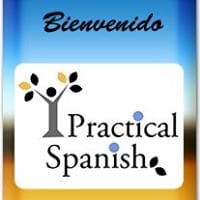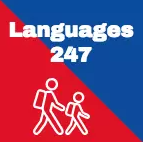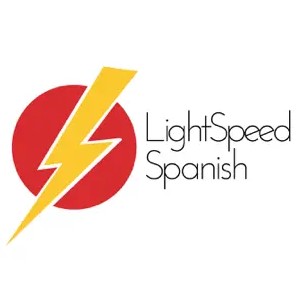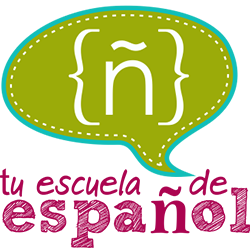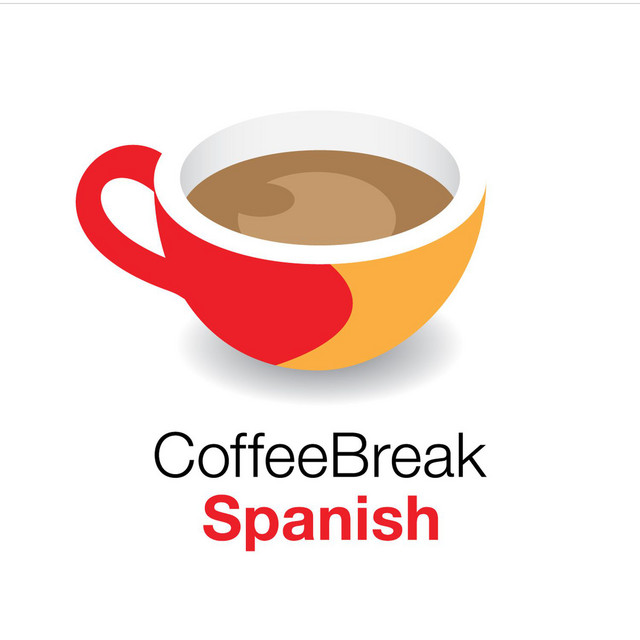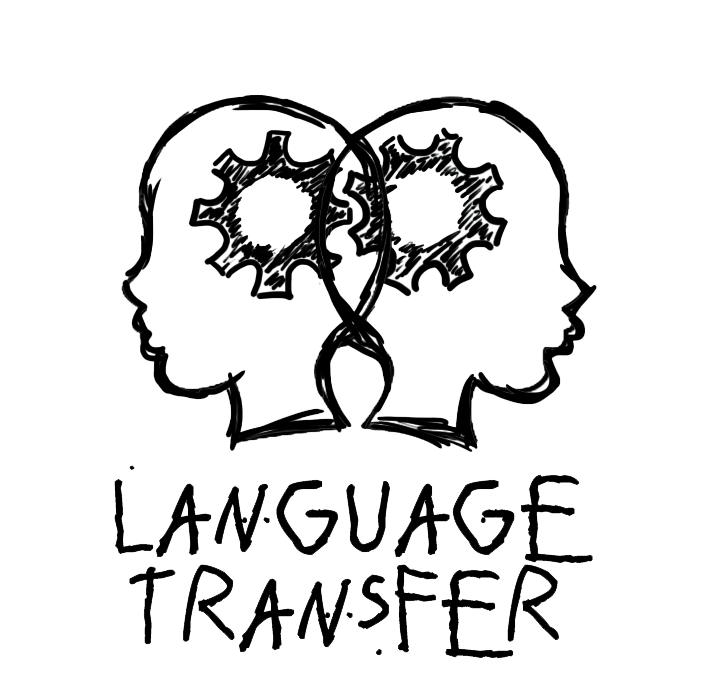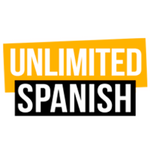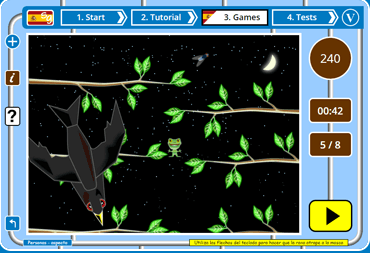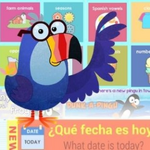
38 Free Online Spanish Courses (Updated in 2024)
So, there’s this crazy myth that you must be rich to learn a language fluently.
Another myth argues that the only possible way to learn fluent, native-level Spanish is to quit your job, buy a plane ticket and physically immerse yourself in a country like Spain, Mexico or Peru for a year.
And it’s just plain silly to think that these myths are true, especially when there are tons of places where you can learn Spanish for free.
In this post, you’ll find 38 free online Spanish courses you can use to learn Spanish, starting today!
Contents
- Free Online Spanish Courses
- Free Spanish Learning Apps
- Free YouTube Spanish Lessons
- Free Spanish Podcasts
- Free Spanish Games
- FAQ About Learning Spanish for Free
- More Free Resources to Learn Spanish
- And One More Thing…
Download: This blog post is available as a convenient and portable PDF that you can take anywhere. Click here to get a copy. (Download)
Free Online Spanish Courses
Here I have a selection of free courses to learn Spanish online. Most of these courses are catered to beginners in the language.
For a full list of online Spanish courses free and paid, read this post.
1. StudySpanish.com
This site offers a variety of online lessons that pertain to specific aspects of the Spanish language.
It’s perfect for all levels of proficiency.
Plus, if you’re interested in improving a specific area of your Spanish, there are grammar courses and vocabulary courses that you can focus on.
2. Practical Spanish Online
Practical Spanish Online offers a complete grammar course in three levels.
Each level is divided into many different categories that are further divided into individual topics. Each topic contains grammar explanations, vocabulary with translations, audio and even video!
3. The Spanish Experiment
This course is divided into different topics that are explained in English but include hundreds of examples in Spanish read by a native speaker.
The content, the explanations and the examples with audio are all excellent.
You can also find different Spanish stories you can listen to and read simultaneously!
4. Spanish Listening
This resource has over 400 audio lessons on so many topics that it would be impossible to include them here.
You can view lessons by level, topic, country, lesson number, etc.
Each lesson has a video with a script, audio questions, a vocabulary section and a quiz.
5. University of Texas
This university resource is divided into different levels, each containing several tasks.
Each task includes videos on the topic, grammar explanations, vocabulary, phrases and a podcast. If you enjoy a compact, fast-paced way of learning, this is where you should start.
6. SpanishTutoring.com
These Spanish lessons are free and divided by topic.
Topics include grammar issues, conversational etiquette, seasons, places and standard greetings—to name a few.
The lessons include exercises and quizzes to assess skills learned. Plus, the audio is clear, concise and perfect for modeling pronunciation.
7. 123TeachMe
Divided into groups (or lessons), 123TeachMe starts with the basics of the Spanish language and builds up to intermediate-level material.
Each lesson contains grammar explanations, vocabulary and sentence exercises and review quizzes, and all the Spanish examples are read by native speakers!
8. The Open University
The Open University has a beginner course emphasizing communication skills so beginners are prepared to navigate Spanish-speaking environments.
They teach you to converse about transportation, places, buildings and directions.
The lessons include conversations, quizzes that you can instantly check for results and more.
9. Alison
This free course covers all of the essentials, including basic vocabulary and grammar, introductions, counting, pronunciation and much more.
Anyone who wants to learn Spanish for free should consider using the course as an introduction to Spanish. The site offers additional Spanish courses—so as your skills increase, you’ll have material waiting to help you level up!
10. BCNLIP
This free video course is designed for absolute beginners.
Three weekly lessons teach vocabulary and grammar, with exercises that are instantly checked.
Use these video lessons as an additional resource. The extra vocabulary and grammar practice is valuable—and since the course is taught by professional Spanish instructors, pronunciation and content are on point!
11. edX
edX is a Massive Open Online Course (MOOC) that lets you take university Spanish courses for free.
Basic Spanish 1: Getting Started is offered by the University of Valencia as a free online course designed to teach conversational Spanish skills.
The course runs for seven weeks, is self-paced and covers all conversational basics.
12. Spanish Cactus
Spanish Cactus is just one of many Spanish-learning courses on Udemy.
When you sign up, you’ll have full access to four total hours of content, with 120+ Spanish lessons.
This course is perfect for beginners. Eight levels are spread across the 120+ lessons, covering vocab, grammar and audio. Each lesson has multiple audio clips and short quizzes, too.
13. Tandem
Tandem keeps things moving, just as any good Spanish teacher would. Each lesson includes introductory materials, downloadable text, audio clips, sample sentences and an example conversation.
Tandem’s course for beginners has 12 lessons. You’ll start with the alphabet, then move through basic topics like nationalities, numbers, family and interrogatives.
14. Languages 247
Languages 247 allows you to learn Spanish for free, from beginner to upper-intermediate.
There are 60 lessons divided into four levels (A1-B2), and each lesson includes five main sections: Reading practice, vocabulary, grammar, speaking practice and exercises.
Plus, everything in the course is in Spanish and English.
15. LightSpeed Spanish
This program features podcasts and videos for learners of any level, from beginner to advanced.
Videos are conversational and use a mix of English and Spanish to teach concepts in a friendly and approachable way.
At each stage, worksheets called “help sheets” are available for purchase if you want to do some extra learning.
Free Spanish Learning Apps
Mobile apps have made it easy to learn Spanish online for free for beginners and beyond. This makes it much easier to squeeze in some Spanish practice every day wherever you are, and do it without spending a cent.
For some great apps (including some premium options), you might want to check out this post, too.
16. Duolingo
Duolingo is easy to use with many exercises and lessons for beginners to upper-intermediate language learners.
It’s organized by units, letting you progress at your own pace.
You can buy the premium version, but you still get the app’s best features and complete course for free.
Click here to read our full Duolingo review.
17. Busuu
The greatest feature that Busuu offers is Spanish conversation practice with native users.
Other great features surround vocabulary, but I think that having that real-time conversation and feedback from a native speaker is extremely valuable and is what makes the app worth it.
Click here to read our full Busuu review.
18. Memrise
Memrise has courses for basic and advanced Spanish, plus varieties like Castilian Spanish, Mexican Spanish and Argentinian Spanish.
There’s a wide range of flashcard-based courses that you can choose from.
This app is excellent for improving your vocabulary, reading and writing skills!
Click here to read our full Memrise review.
19. Mondly
Mondly provides new Spanish lessons every day that focus on real-life Spanish.
You’ll learn phrases you’ll actually use, listen to native speakers and practice speaking. Mondly uses speech recognition software and spaced repetition to enhance your language journey.
Mondly offers a free plan, but even more is available with the premium memberships.
Click here to read our full Mondly review.
20. SpanishPod101
SpanishPod101 has hundreds of 3-15 minute audio and video lessons.
You’ll receive a new weekly lesson and vocabulary lessons every day. You can skip ahead in a lesson if it’s too easy or slow it down if it’s too difficult.
One-on-one conversations with teachers, lesson notes and study tools come with the premium membership.
Click here to read our full SpanishPod101 review.
Free YouTube Spanish Lessons
YouTube lessons allow you to pause and rewind whenever you need to, focus on a particular topic of your interest, play with different levels of fluency and choose a teaching style that best suits your needs.
Here are some of the best Spanish YouTube channels out there.
For a more in-depth list of Spanish YouTube channels, check out this post here.
21. Butterfly Spanish
Butterfly Spanish motivates you on your quest for fluency, no matter your level.
Ana will guide you with her charming lessons about any topic you want to hear about.
She also focuses on particular Spanish letters and syllables, with the goal of teaching you how to pronounce them like a native speaker.
22. Practiquemos
The channel Practiquemos is perfect if you love the traditional classroom vibe.
The somewhat motherly touch Professor Catalina Escobar brings to her Spanish channel is warm yet professional and polished.
She’s got more than enough video content here to get you interested and keep you around long-term, from beginner to advanced topics.
23. Maria Español
This channel categorizes classes according to the Common European Framework of Reference for Languages, so you can choose content from levels A (beginner’s level) to C (fluency).
The lessons include dialogue translation to listening exercises, vocabulary lessons, everyday expressions, conversation for advanced students and even reading practice for beginners.
24. Señor Jordan
This channel no longer updates, but his short videos are still helpful.
Jordan makes grammar interesting, as his teaching style is very conversational.
He provides links to teaching materials in the description, which you can use to quiz yourself on the vocab and grammar in each clip.
25. Tu escuela de español
The lessons on this channel are held entirely in Spanish.
You won’t see the teacher in these videos. However, the lessons still resemble the ones in a typical Spanish classroom setting.
While the videos resemble being in a classroom, the teacher still keeps things interesting.
26. Learn Spanish with Rodrigo
Learn Spanish with Rodrigo is an extensive language program that teaches every level from beginner to advanced.
There are nearly 500 lessons covering Spanish grammar and essential vocabulary, including “the rolling r” and counting to a billion.
The program also includes course notes and quizzes for each lesson.
27. Dreaming Spanish
This channel has over 1,500 videos to teach you Spanish from beginner through advanced. Videos include teachers from various regions that will help you learn different accents.
The videos are entirely in Spanish, so if you’re serious about learning Spanish in a quick, effective way, this channel is what you’re looking for.
Click here for our full review.
Free Spanish Podcasts
Podcasts will help you start blurring the line between Spanish learning and your interests, hobbies and daily activities.
I’ve collected some podcasts with different levels of difficulty, countries of origin and topics of interest, so you can start listening right away.
28. Audiria
Audiria was created by two brothers from Málaga.
This podcast is perfect for the eclectic Spanish student interested in a wide range of topics and who wants to learn how to talk about anything.
You’ll find discussions about the economic crisis, trips to the pharmacy, meal recipes and even the Spanish constitution.
29. A Hombros de Gigantes
This podcast addresses big science topics such as the evolution of the human race, earthquakes, the universe and the relationship between science and the internet.
All recordings are presented by a native Spanish speaker, author and science connoisseur Manuel Seara Valero.
It’s especially beneficial for intermediate and advanced levels of Spanish.
30. Futuro Abierto
Futuro Abierto (open future) is your podcast, discussing education, sexuality, mental health, marriage and divorce, animal rights and even the digital economy.
This podcast is the place to be if you’re approaching an advanced level of Spanish and want to study the ways in which you can express political views and perspectives on society.
31. Notes in Spanish
This podcast provides material for beginner, intermediate and advanced learners.
The podcasts are free, but you can buy worksheets that go with the podcasts.
Various topics are offered, including household items, holidays, places, customs, etc. The podcasts are short—most are under 30 minutes long—so they’re bite-sized lessons.
32. Coffee Break Spanish
Coffee Break Spanish has four levels: absolute beginner, intermediate, upper intermediate and advanced.
The lessons are casual, conversational and practical, and cover various topics.
One thing worth mentioning is that the instructor mainly teaches Spanish that’s spoken in Spain.
33. Language Transfer Spanish
Language Transfer is a nonprofit project that uses the Thinking Method strategy.
Rather than spewing grammar rules and vocabulary terms, the lessons focus on the similarities and differences between Spanish and English.
With this learning method, the instructor encourages you to listen to the content rather than diverting your attention to note-taking.
34. Unlimited Spanish
These lessons are entirely in Spanish, though the instructor speaks slowly enough for beginners to follow along.
The lessons have short stories and exercises, allowing beginner and intermediate learners to think in Spanish.
Plus, each podcast has downloadable transcripts that will help you follow along with the audio.
Free Spanish Games
If you love gaming in your free time, a great way to work on your Spanish is to switch the language settings of your favorite game. This way you can have fun but also be passively working on your language skills.
There are also some games out there that are already in Spanish.
Click here to read our post with a more comprehensive list of Spanish games, free and paid.
35. Spanish-Games.net
This website lets you practice Spanish grammar and vocabulary by playing games like Hangman.
You can switch between Castilian Spanish and Latin American Spanish, as well as your level of fluency (from beginner to intermediate) to adapt to the type of games, tutorials and topics that are displayed onscreen.
36. Digital Dialects
This platform offers free games for 80 languages and dialects.
You may choose your page according to where you’re at with Spanish, selecting advanced vocabulary-building games or simple exercises to start counting or greeting people in Spanish.
Additionally, you may choose between testing your reading skills or listening skills according to your chosen game.
37. Scholastic
Scholastic has a section for Spanish-language games only.
Limpia tu gramática (Clean up your grammar), for instance, is a great game to help you distinguish between substantives and verbs with a drag-and-drop system.
Although this platform targets children, older Spanish students can benefit from its challenges, too.
38. OnlineFreeSpanish
This resource is divided into 20 lessons, including different topics (from the alphabet to vocabulary words about toys, fruits and numbers), promising hours of fun and learning.
Each lesson contains many games to practice the topic and printable coloring pages with the vocabulary covered.
FAQ About Learning Spanish for Free
How can I learn Spanish fast for free?
According to the Foreign Service Institute (FSI), it takes around 24-30 weeks to learn Spanish if you spend 2-3 hours studying a day. If you choose a free resource and stick to it, it’ll be much easier to be consistent! Click here to get more tips to learn Spanish fast.
Is there a 100% free Spanish learning app?
Duolingo and Memrise offer all their language courses for entirely free, with the option to upgrade for ad-free learning or added features. Check out our full post on free language learning apps to find more resources.
Can you learn Spanish online for free?
Yes, there are plenty of resources that allow you to learn Spanish online for free!
StudySpanish.com offers all of its Spanish grammar lessons for free, MOOC platforms like edX and Coursera have many free courses, and you can find tons of Spanish lessons on YouTube for free—just to name a few.
More Free Resources to Learn Spanish
These 38 resources are more than enough to get you started. But you can also learn Spanish phrases, grammar points, vocabulary and more through blog posts like this one for free without a resource.
These posts teach you different elements of Spanish, give you tips for learning faster and more effectively, find more resources for specific skills and more:
- 131 Useful Spanish Travel Phrases Every Traveler Should Learn
- How to Learn Spanish in 18 Effective (and Interesting) Ways
- Spanish for Beginners: Here’s Exactly What You Need To Learn
- 143 Spanish Phrases to Start Speaking Right Now
- 50 Most Common Spanish Adjectives for Beginners [With PDF Download]
- 78 Most Common Spanish Verbs You Need To Know [With Free PDF]
- The Complete Guide to Core Spanish Grammar Topics
- 300+ Spanish Slang Words from Around the World
- 18 Essential Spanish Grammar Rules Every Learner Should Know
- How to Say Hello in Spanish: 76 Classic and Creative Ways to Greet Someone in Spanish
Hopefully, this has provided all the resources you need to start speaking, writing, reading and understanding Spanish.
The beauty of these free tools is that you can mix and match them or pair them with premium language programs to create your own study routine.
For example, the resources above can teach you the everyday grammar used by native speakers in FluentU Spanish media clips.
Next time you doubt whether you’ll ever be able to learn Spanish with an aching wallet, remember that you have all of these free online Spanish courses!
And One More Thing…
If you've made it this far that means you probably enjoy learning Spanish with engaging material and will then love FluentU.
Other sites use scripted content. FluentU uses a natural approach that helps you ease into the Spanish language and culture over time. You’ll learn Spanish as it’s actually spoken by real people.
FluentU has a wide variety of videos, as you can see here:

FluentU brings native videos within reach with interactive transcripts. You can tap on any word to look it up instantly. Every definition has examples that have been written to help you understand how the word is used. If you see an interesting word you don’t know, you can add it to a vocab list.

Review a complete interactive transcript under the Dialogue tab, and find words and phrases listed under Vocab.

Learn all the vocabulary in any video with FluentU’s robust learning engine. Swipe left or right to see more examples of the word you’re on.

The best part is that FluentU keeps track of the vocabulary that you’re learning, and gives you extra practice with difficult words. It'll even remind you when it’s time to review what you’ve learned. Every learner has a truly personalized experience, even if they’re learning with the same video.
Start using the FluentU website on your computer or tablet or, better yet, download the FluentU app from the iTunes or Google Play store. Click here to take advantage of our current sale! (Expires at the end of this month.)


